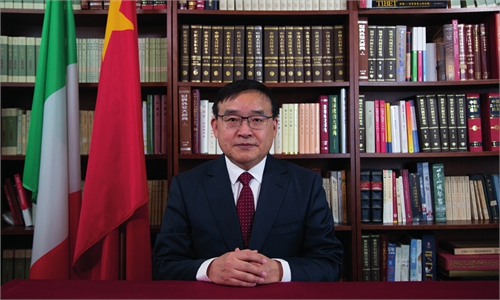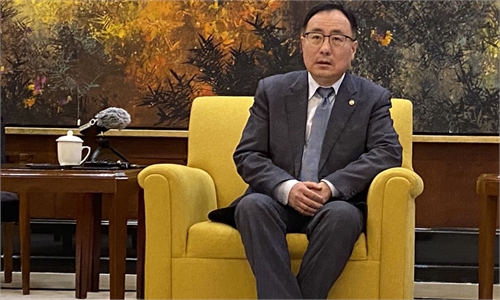IN-DEPTH / IN-DEPTH
Foreign vloggers post videos of China’s public healthcare system, clear up misunderstandings
Focus on health
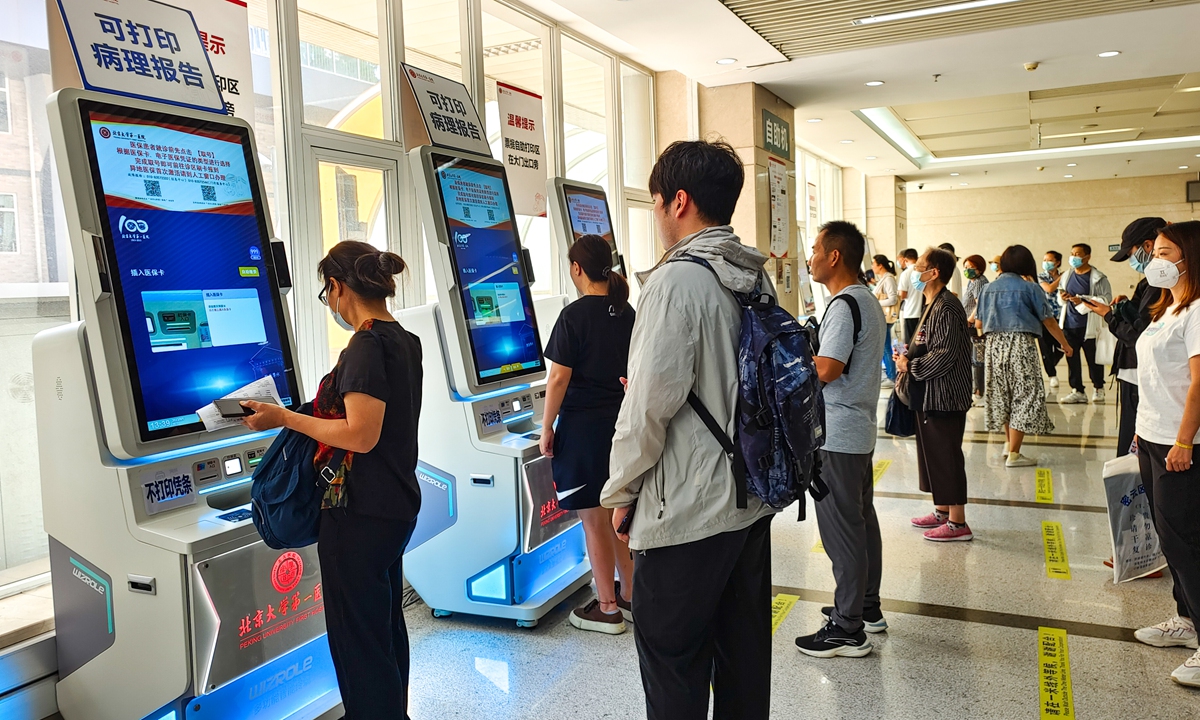
People queue to print examination reports on the self-service printing devices at the Peking University First Hospital in Beijing, on September 1, 2023. Photo: VCG
Editor's Note:
Over 700 years ago, Italian traveler Marco Polo journeyed through China, documenting his experiences and introducing the splendor of ancient China to Europe in his book. Fast forward to the present day, when people discover China through online videos. With China's visa-free policies and the introduction of 144-hour visa-free transit, a wave of international YouTubers and vloggers has flocked to China.
After exploring gateway cities, where they gain initial insights into China's modern cityscapes and rich cultural heritage, these YouTubers and vloggers soon turn their attention to localized regions, delving into frontier areas, revolutionary sites, and public infrastructure to find the answers to the questions: "What is modern China like, why is it the way it is, and how does it function?"
Through their cameras, they present a real, friendly, and vibrant China to the world. They are affectionately referred to by the Chinese as the "Marco Polos" in the New Era.
Therefore, the Global Times presents this "Marco Polo" Trilogy.
In the third installment, some foreign vloggers who were impressed by China's public healthcare services share with the world why they like the system and what they think other countries can learn from it.
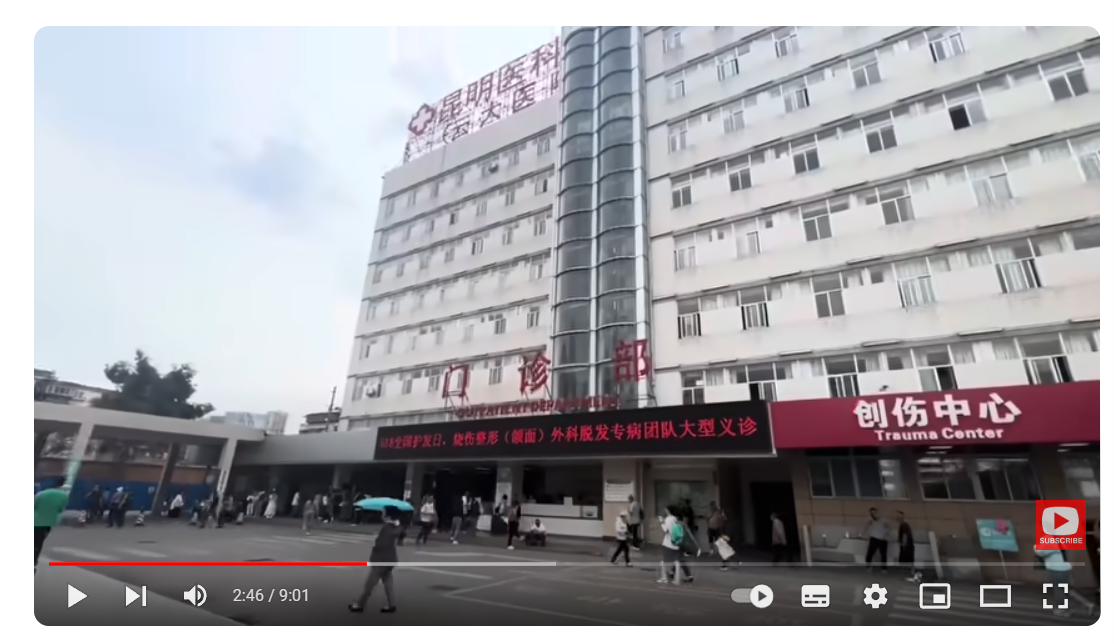
Screenshot of South African vlogger Lizzy's video on YouTube about her visiting a hospital in Kunming, Southwest China's Yunnan Province, in May.
"China's healthcare is so bad compared to the US and the West, that is what I often hear in my YouTube comments, but is it true?" a vlogger from the UK whose channel is called "Harvey in China" asks at the beginning of a video he posted on YouTube.
To clear up any misunderstanding and provide detailed insight into specific aspects of China's daily life to more people is the reason driving many vloggers like Harvey to make videos about China's public healthcare system in recent times amid booming travel to China and a growing curiosity about the country around the world.
According to the latest data revealed at a Chinese State Council press conference on Tuesday, from January to July, China recorded 5.722 million inbound international passenger trips, a 403-percent year-on-year increase.
So how is China's healthcare system and is it convenient for foreigners to see a doctor in China? Check what these vloggers say.
A detailed insight
In the less than 10-minute video, Harvey, who has been living in China for about three years, broke down how much it costs to see a doctor in China for the reviewers, how to make an appointment, and what the differences are between China's public healthcare system and those in the UK and the US based on his own experiences and comparisons.
In response to the misconception that healthcare service in China is expensive and only available to rich people, for example, Harvey said that, in a recent visit, he spent 30 yuan or around $4, to see a doctor at a hospital in downtown Shanghai, while the average salary in the city is reportedly about 13,500 yuan per month. "So, spending 30 yuan to be seen by a doctor is affordable to the general population."
The level of technological integration in China's public healthcare system also impressed Harvey. "Appointments, prescriptions, [and] even payments can be managed through a single app on the phone. This integration of technology has made the entire process smoother." Conversely, in the UK, "one still has to call at exactly 8 am as soon as the line is open to try and get an appointment to see the doctor."
"The combination of affordability, accessibility, and technological integration makes China's healthcare system a model worth considering for other nations while it is not without its challenges... hopefully we can take a thing or two from China's approach and implement it into our own systems," Harvey concluded.
Harvey's video has been watched nearly 18,000 times as of Tuesday.
It struck a chord with many viewers who also shared their experiences in the comments of how efficient China's public healthcare service is.
"I was in China and my daughter got sick. Being a foreign visitor, I was helped by our host to visit a doctor at a small simple clinic. She was attended to in a second, checked, and prescribed a bunch of medication. [It] cost us 15 yuan all in all and in two days my daughter got well. Amazing system," a YouTube user commented on Harvey's video.
An efficient system
Convenient and affordable medical services are major advantages of China's public healthcare system that have been mentioned by many foreign vloggers.
"I was really impressed by the facilities and efficiency. In one day, I completed all the examinations and received the results quickly," Thibaut Grzelak, a 27-year-old French engineer and vlogger, told the Global Times.
Grzelak has been working at a French company's branch in Hangzhou, capital of East China's Zhejiang Province, for about one year.
He went to a local hospital for a routine examination and a blood test in July. He said that his only concern before going to the hospital was about the language barrier. "It's always difficult to describe symptoms and feelings, even in your mother tongue, so doing it in English or Chinese is challenging."
Grzelak asked his Chinese girlfriend to go to the hospital with him in case he needed help with translating. But it turned out that most doctors there could speak English. There were also English signs to help find doctors, and many people were willing to help if needed.
"The doctor identified my problem and provided the appropriate treatment. The total cost was very reasonable, at about 100 yuan. If I ever need to go back to the hospital, even for a major surgery, I wouldn't hesitate to do it here!" he said.
Mylene, a French food and fashion influencer, told the Global Times that, in France, it is unimaginable to finish seeing a doctor, conduct examinations, and receive a diagnosis within a day.
France does not have such a system for patients to make appointments and go to a hospital at any time. Moreover, each French doctor only accepts a certain number of patients. When Mylene's gynecologist retired, there was no other gynecologist with available slots for new patients. So, she waited for one to two years until a new gynecologist came to work in the city she lived.
Mylene was also a fan of traditional Chinese medicine (TCM). It costs about 70 euros in France to see a TCM doctor, but in China it only costs a normal appointment fee, usually 10 yuan, to see an experienced TCM doctor, she said.
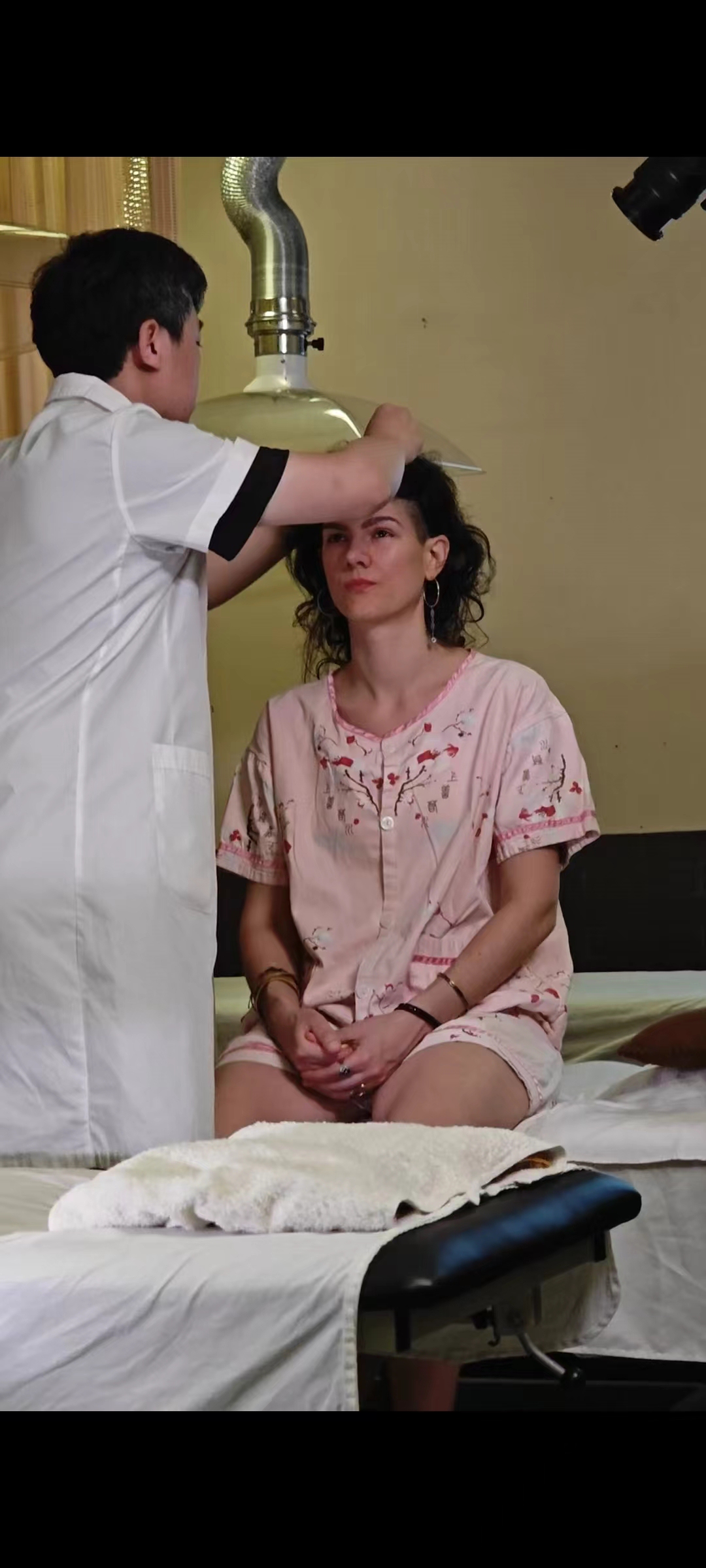
Mylene receives TCM treatment in September 2023, in a hospital in Beijing. Photo: Courtery of Mylene
A vivid China
China has impressed the world with its strength in infrastructure construction and its speed in technological innovation and application.
This time, a growing focus on the country's healthcare system is believed to serve as a specific opportunity that would allow the world to have a real and detailed glimpse into China's achievements in promoting people's living standards as the system is widely viewed as a fundamental aspect of a society that reflects not just the overall well-being of the population, but also the effectiveness of governance.
When vlogger Lizzy tried to search for Chinese hospitals in YouTube in May "there was actually nothing on there."
"There are a lot of bad things that are always on there because of COVID, but there's actually no normal video of Chinese hospitals," said Lizzy, a vlogger from South Africa, who has lived in China for about five years.
Lizzy thus decided to record the process of her seeing doctors at a hospital in Kunming, capital of Southwest China's Yunnan Province, after something went wrong with her knees.
The video did play a role in changing some foreign-held stereotypes about China and allowed more people to learn about the Chinese healthcare system. "Very nice video! You inspire me to visit China," a netizen commented while complaining that the media in their country barely reports positive things about China.
Chinese authorities and industries are also eager to seize this opportunity to expand the country's medical tourism market while showcasing the world its medical capacity and development.
In February, Sanya in South China's Hainan Province optimized its visa-free policy by expanding the reasons for entry without a visa for people from 59 countries to Hainan to include medical treatment purposes.
Famous for its tropical coastal scenery, TCM health preservation industry, as well as distinctive ethnic traditional culture, TCM hospitals in Sanya have been providing medical tourism services since 2002. So far, more than 100,000 international tourists entering China via Sanya have enjoyed the service, as reported by People's Daily on August 9.
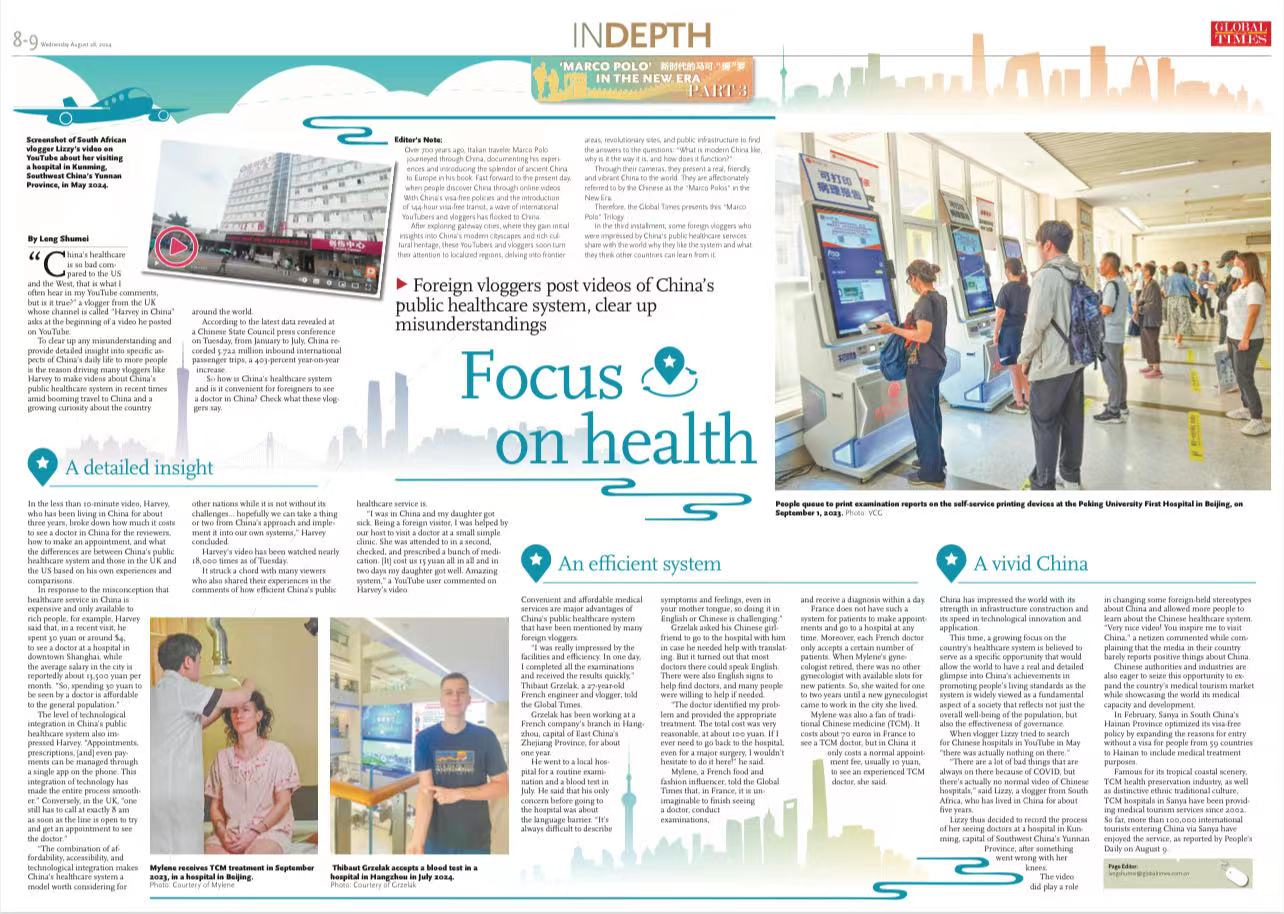
Focus on health

